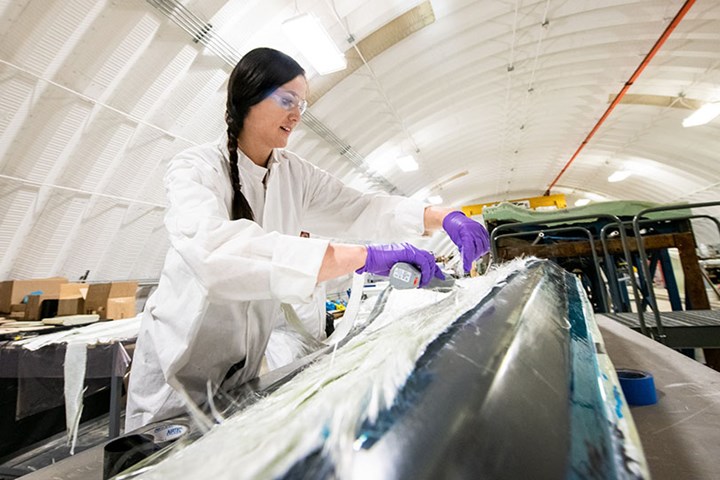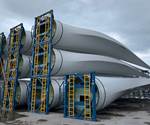NREL, Arkema research recyclable, thermoplastic composite wind turbine blades
The National Renewable Energy Laboratory and partners aim to develop more sustainable, longer-lasting turbine blades that are less expensive to manufacture.

With a goal toward recyclable wind turbine blades, researchers at the U.S. Department of Energy’s (NREL, Golden, Colo., U.S.), in partnership with Arkema Inc. (King of Prussia, Pa., U.S.), recently demonstrated the feasibility of a thermoplastic resin, and have validated its structural integrity on a thermoplastic composite blade manufactured at NREL.
NREL has also announced the development of a technoeconomic model to explore the cost benefits of using a thermoplastic resin in blades. According to NREL, manufacturing wind turbine blades with thermoplastic resins, as opposed to conventional thermoset resins such as epoxy, would make turbine blades more recyclable and also enable longer, lighter-weight and lower-cost blades — the lower costs coming from the ability to cure NREL’s thermoplastic resin at room temperature, removing associated process and labor costs. The new process, the researchers determined, could make blades about 5% less expensive to make.
NREL is home to the at the Flatirons Campus near Boulder, Colorado. There, researchers design, manufacture and test composite turbine blades. They previously of the thermoplastic resin system by manufacturing a 9-meter composite wind turbine blade. They followed that demonstration by manufacturing and structurally validating a 13-meter thermoplastic composite blade compared to a near-identical thermoset blade. This work, coupled with work by Arkema and other Institute for Advanced Composites Manufacturing Innovation (IACMI, Knoxville, Tenn., U.S.) partners, demonstrated advantages to moving away from the thermoset resin system. The thermoplastic resin could also allow manufactures to build blades on site, NREL says, alleviating a problem the industry faces as it trends toward larger and longer blades.
“With thermoset resin systems, it’s almost like when you fry an egg. You can’t reverse that,” says Derek Berry, a senior engineer at NREL. “But with a thermoplastic resin system, you can make a blade out of it. You heat it to a certain temperature, and it melts back down. You can get the liquid resin back and reuse that.” Berry is co-author of a new paper titled, “,” which appears in the journal Renewable Energy.
Related Content
-
SRI develops scalable, infiltration-free ceramic matrix composites
Work in two DOE projects is demonstrating C/C-SiC produced in 3-5 days with <5% shrinkage, <10% porosity and 50% the cost of conventional C/C and C/C-SiC.
-
Polar Technology develops innovative solutions for hydrogen storage
Conformable “Hydrogen in a Box” prototype for compressed gas storage has been tested to 350 and 700 bar, liquid hydrogen storage is being evaluated.
-
RTM, dry braided fabric enable faster, cost-effective manufacture for hydrokinetic turbine components
Switching from prepreg to RTM led to significant time and cost savings for the manufacture of fiberglass struts and complex carbon fiber composite foils that power ORPC’s RivGen systems.
.jpg;width=70;height=70;mode=crop)


